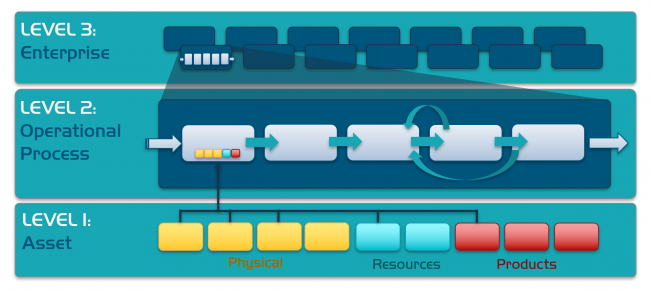Digital Twins Demystified

The concept of digital twins is much more complex than it is often presented. They find application not only on the level of assets, but also when it comes to processes and management, as Andrew Aitken of Lanner explains in a clear and understandable way.
“Today’s digital world encompasses a wide spectrum of technologies and market needs, so there have been many interpretations of the digital twin concept. Digital twins gained initial momentum within high-value product manufacturing industries (such as automotive and aerospace), but the concept is increasingly being found across many others including in FMCG, food and beverage, construction, retail and energy,” states Andrew Aitken in his presentation.
For a proper understanding of the concept of digital twins, it will be necessary to begin to perceive the overall issue more comprehensively, from the perspective of individual layers of their application and impacts.
General Electric defines 3 levels in which Industry 4.0, as well as digital twins, influence the overall performance:
- Assets
- Operating process
- Enterprise
Digital Twins by Far Not Only Related to Physical Components
A number of studies and authors have stated that digital twins may relate solely to physical objects, such as products or individual production facilities, thereby confirming only the level of assets. However, these definitions are unnecessarily strict and in many cases distorted by the professional background of individual authors.
Marc Thomas Schmidt from General Electric has a much more complex point of view. In his work called Minds and Machines 2017, he defined digital twins as “Dynamic digital representations that enable companies to optimise the performance of their assets, processes and business”.

The scheme makes it clear that all the individual levels are closely related to each other. For example, asset levels include the company’s physical conditions, production resources, as well as its own products. At the same time, this level becomes the starting point and input parameter for a higher level of business processes, while the process level becomes the building block for enterprise-wide management.
It is important to point out that at the operational and enterprise levels, digital twins will be necessarily based on some sort of dynamic logic and predictive simulation throughout the process, so that it can provide the best possible analytical outputs.
Tailor-Made System
The higher the level, the more everything moves away from the product lifecycle management domain (link to assets) to the process control domain. This makes it possible to tailor this concept to the specific needs of individual companies, and there is no one-size-fits-all solution.
Related articles
Jun 7, 2024
DJI introduces its first delivery drone
DJI introduces its first delivery drone
Jun 7, 2024
5 expert insights into the world of dynamic simulations and logistics
5 expert insights into the world of dynamic simulations and logistics
Apr 2, 2024